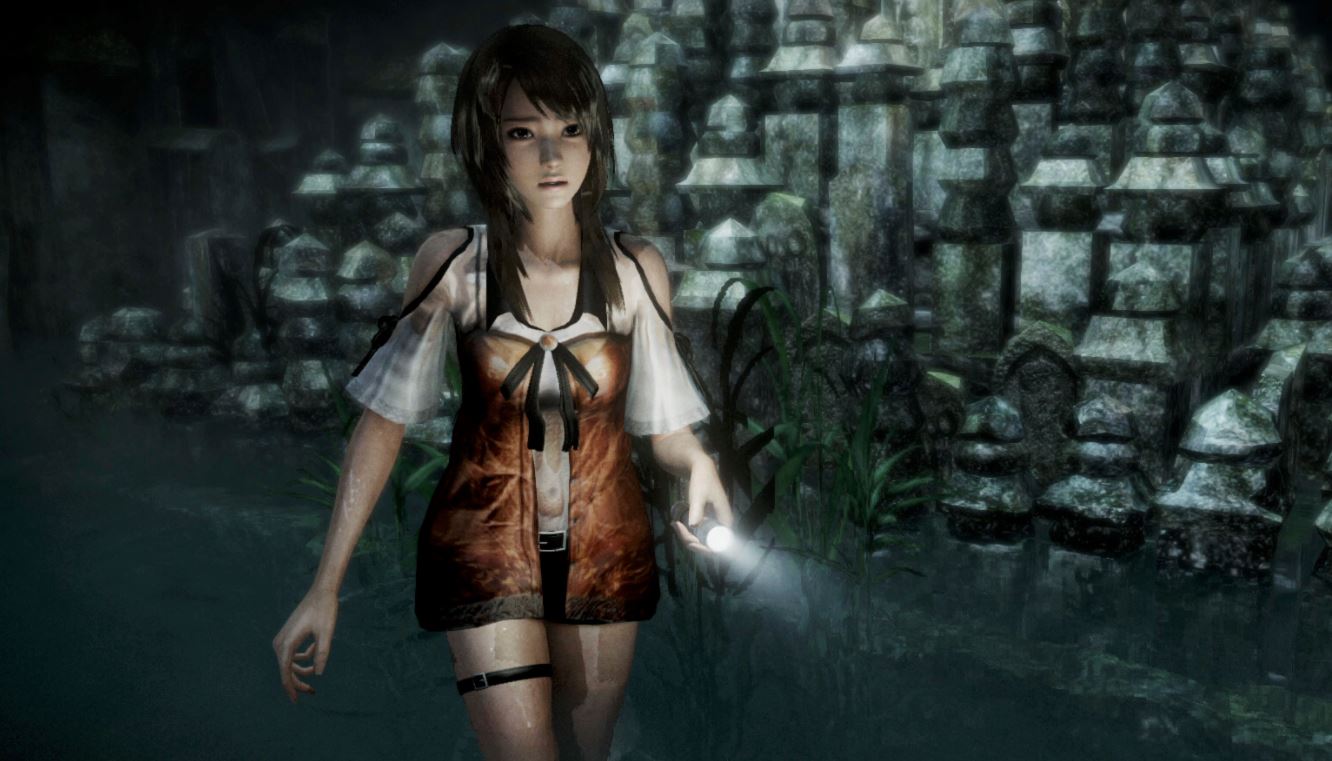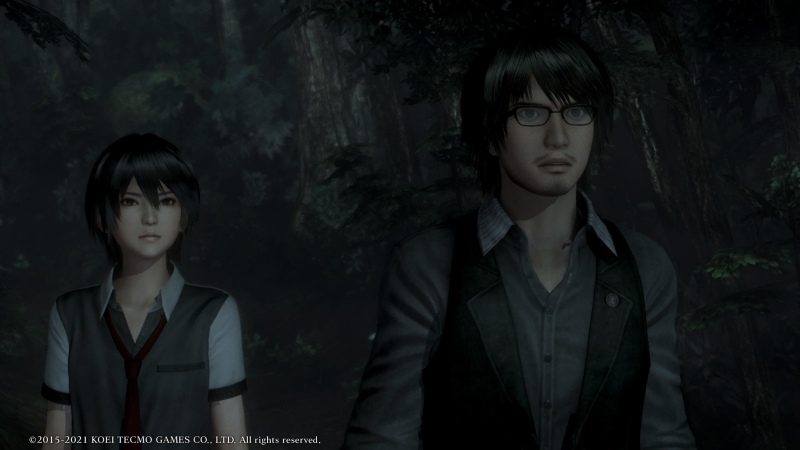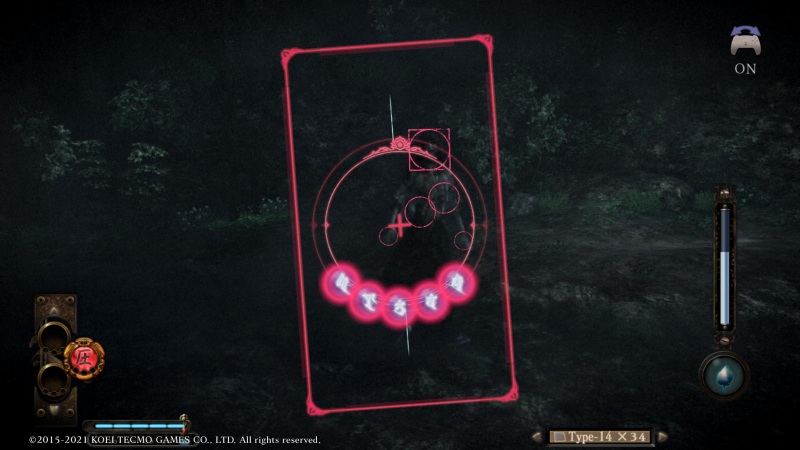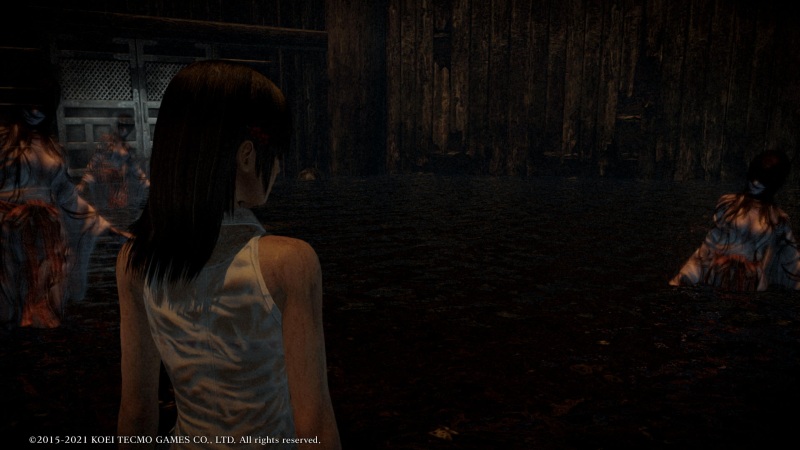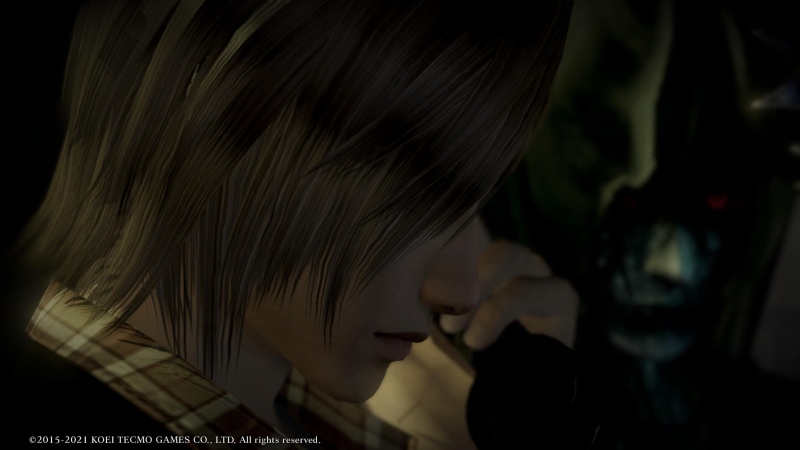Fatal Frame: Maiden of Black Water PS5 Review – With time allotted, I jump on any horror-related game I can get my hands on. Since I missed out on Maiden of Black Water during its original Wii U release, I was excited to hear when Bandai Namco announced an enhanced release on modern consoles.
I’ve experienced several Fatal Frame titles before this one, but Maiden of Black Water is my first completed game in this franchise. And, while this latest outing makes some significant mistakes, it also creates an environment worthy enough of enduring any misgivings you encounter.
Fatal Frame: Maiden Of Black Water PS5 Review
Puddle Narrative, Ocean Premise
You take control of three characters over your time with Black Water: Yuri Kozukata, an attendant at the museum, which acts as a kind of central hub for the game; Ren Hojo, the curator of said museum who moonlights as an author; and Miu Hinasaki, the daughter of recurring franchise character, Miku Hinasaki.
There’s a lot to unpack with these descriptions, but this tends to be most of the depth of their character development.
Each character confronts different scenarios along the way, and they all hold some sort of relevance to said scenarios, be it a parallel or lookalike or lineage tie. Either way, these three characters act more like plot devices to experience the subtext revolving around the Maiden of Black Water and her untimely creation. This makes for great backstory, but it also makes for dull narrative development.
At the same time, the game realizes that its strength comes from dedicating more time to the backstory, which the game intravenously delivers over the course of the playtime. The focus stays on the spirits you encounter, how they relate to each other, and why they do what they do.
If you can get past the paper-thin efforts to personify the narrative device main characters, Maiden of Black Water offers an engaging backend scenario filled with loss, anguish, revenge, and self-defeat.
Camera Obscura Ad Infinitum
You spend over half of your game time looking through the lens of your Camera Obscura, a special camera created to interact with and capture paranormal activity. Occasionally, you use the camera to pull items from the past into the present when your camera resonates with something nearby. These usually grant you insight into where you must go next.
Utilizing the camera feels great and responsive in the ways you need it. Aim and shutter have L2 and R2 pinned to them, respectively, and you have free reign to walk around the map slowly as you aim. The right joystick naturally moves the camera around, but you also use motion control to make finer adjustments and shift angles.
You aren’t dependent on motion controls like with the Wii U, but they assist with more traditional controls to create a welcome middle ground between the two.
Most of the time the camera is your only line of defense against hostile spirits. Each target, whether it be a ghost or object, has a lock-on point you can focus on by pressing L2. Unlike objects, enemies release spirits as you take pictures, and each one acts as another focal point for your picture. The more focal points you align in your shot, the more damage you inflict on the in-frame targets.
Lining up five or more focal points feels so gratifying because enemies naturally move around so much. Equally so, the amount of time you use the camera throughout the 12-hour romp proves too repetitive to feel fresh and gratifying the entire time.
On rare occasions, the game places you in a unique situation where you have to time photos in different ways, which helps a bit. Unfortunately, these few variations don’t mix up the rest of the experience at all.
Suspense Galore
Fortunately, another constant is the level of suspense the game creates. Some moments intensify, like with boss fights and significant backstory reveals, but the rest of the game maintains a constant level of tension. There’s plenty of moments where ghosts jump out at you or the game shows you grotesque imagery, but the true tension comes from pacing.
Even when your character runs, he or she moves slowly. The maps themselves aren’t big, and they don’t spread out too far either. The slower pace plays to that aspect of the environment well just because it uses less space more conservatively. Combine that with a steady stream of random ghost encounter, both hostile and otherwise, and you spend most of the game waiting for the next paranormal thing to show up.
The other aspect of pacing comes with how you pick up items. You must hold R2 to pick up anything, and the animation sees your character bending down or reaching for the item tentatively. Randomly, a ghostly hand pops out and grabs you, inflicting damage. If you let go of R2 quickly enough, you avoid the ghost attack entirely.
Maiden continues to play on your expectations for the next scare by regularly not doing anything abnormal. This creates a constant unknown outside of the aforementioned hand reaching for you.
The camera zooms in when you open doors, and other times random spooks just sit in the background waiting for you to notice. This makes for stretches of down time, but the constant worry around the next corner keeps you anticipating for what comes next.
Up and Down Presentation
In the game’s defense, Maiden is an eight-year-old title, so remastered visuals only improve the formula so much. At the same time, more effort went into enhancing character models than into much of the environment.
Many free standing objects, like shelves and dolls, all received some extra love, allowing for even more vivid interaction with your flashlight. However, the overall backdrops and periphery borders lack any sort of enhancement, looking more like PS3-grade rocks and walls.
Looping back around to character models, the enhancements they receive bring extra details to clothes and hair that the original version couldn’t muster. At the same time, the improved visuals further highlight that the original game lacked any kind of facial animations.
Characters don’t show much genuine shock or emotion unless that individual already portrays it, like general sadness or indifference. This further makes the story directly related to the main characters feel lackadaisical.
The sounds of Maiden do the job well enough. As expected, it doesn’t maximize surround sound much, even with a headset. At the same time, moving through water, which happens often, sounds great and even haunting at times. This holds true in tight spaces, creating further claustrophobia in the constricted environments.
In general, most horror games only run between six and 10 hours, but Maiden took about 15 hours for me to finish my first time. While I appreciate playing a longer horror game, Maiden just doesn’t offer enough variety to warrant that length of game. When looking at the original version, it would have benefited from shortening the journey somehow; though I’d hate to see any of the backstory go anywhere.
Horror Intended for The Dedicated Fan
Fatal Frame: Maiden of Black Water creates a tense environment for you to explore and builds up a compelling backstory for you to unearth. The remaster job makes it look better than it did before, but it also showcases a lack of facial animations and refined environments. While the camera-based gameplay gets repetitive, it still feels rewarding in its own way.
Maiden of Black Water is a game with a target audience in mind, something that doesn’t happen much anymore. If you can pick up what Maiden of Black Water is putting down, you’ll love this trip into the dark.
Fatal Frame: Maiden of Black Water is due out on October 28, 2022 for PS5, PS4, PC, Switch, Xbox Series X/S, and Xbox One.
Review code kindly provided by publisher.
